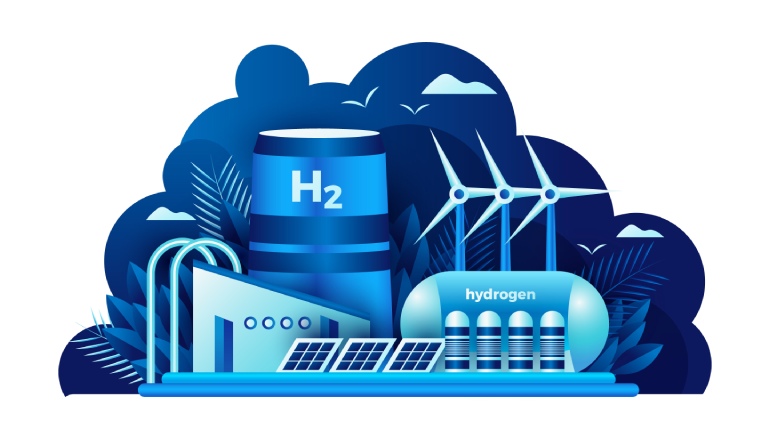Hydrogen, it seems, is India’s new Green Mine!
Suddenly, everyone seems to be focused on the green hydrogen space. Beginning with investment forecasts, corporates lead the way in investments, land distribution, and deadline extensions for submitting R&D proposals.
The developments come as a welcome move as green hydrogen plays a crucial role in India’s energy security and significant carbon emission reduction potential.
The green hydrogen pilots have succeeded, despite concerns about costs and the long way to commercialization. Nevertheless, leading corporates are committed to manufacturing green hydrogen, and policymakers are flexible in accommodating industries’ needs and demands.
Take, for example, the National Hydrogen Mission, which was initiated with a total budget of Rs 19,744 crore through the 2029–2030 fiscal year. The goal is to support large-scale, economically viable use of green hydrogen through the development of production technologies and the creation of an ecosystem. The objective is to establish India as a worldwide center for the generation, application, and sale of green hydrogen and its derivatives.
Significantly, in another development, the Ministry of New & Renewable Energy has extended the deadline for submission of R&D proposals under the National Green Hydrogen Mission to 27th April 2024. The development provides more time for academics and organizations to prepare. It must be noted that the government has issued guidelines for an R&D scheme with a budget of Rs 400 crore for the 2025-26 financial year, promoting green hydrogen usage.
India is projected to attract $125 billion in green hydrogen value chain investments by 20230 due to its cost-effective green hydrogen production advantages. When combined with the growing emphasis on sustainability and decarbonization, India’s renewable energy costs are among the lowest in the world, positioning the nation as a hub for competitively priced production. Furthermore, green hydrogen will accelerate India’s shift to a green economy.
Both the government and the corporate sector are taking the plunge.
Gujarat’s government has allocated 63,000 hectares for green hydrogen production in Kutch, Banaskantha, and Patan districts, following a previous allocation of 1.99 lakh hectares. Reliance New Energy, Adani New Industries, Torrent Power, ArcelorMittal Nippon Steel India, and Welspun Group were among the first recipients of the 1.99 L hectare allocation.
Reliance Industries Ltd. (RIL), Larsen and Toubro (L&T), Greenko Group, and Welspun New Energy are planning to establish green hydrogen and green ammonia units at Gujarat’s Deendayal Port Authority (DPA), according to a report published in The Economic Times titled “RIL to lead massive Rs 1 lakh crore investment in green hydrogen, ammonia units at Kandla.
According to ET, which cited reliable sources, the project is expected to draw investments of up to Rs 1 lakh crore, making it one of the biggest in India’s energy infrastructure. This will be one of the biggest investments made in the energy sector. India wants to become a world leader in green hydrogen production, and this is the goal of its National Green Hydrogen Mission.
While domestic consumption of green hydrogen by commercial and industrial users will drive early investments, the steel industry is expected to account for the largest share of off-take contracts in the near term.
While India positions itself as a leader in green hydrogen production, this technology presents both challenges and opportunities. Encouraging widespread adoption across industries, from vehicle manufacturers shifting to hydrogen-compatible models to achieving cost-effectiveness, will remain key hurdles.

